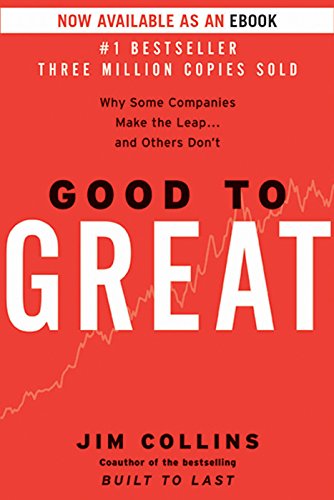

This article is an excerpt from the Shortform summary of "Good to Great" by Jim Collins. Shortform has the world's best summaries of books you should be reading.
Like this article? Sign up for a free trial here .
What is a culture of discipline? Why do the most successful companies have one? How do you foster a culture of discipline in your own workplace?
A culture of discipline is a workplace culture in which everyone gauges his or her actions according to the company’s common goal. The concept is detailed in Jim Collins’s book Good to Great, in which he argues that truly great companies have a culture of discipline.
We’ll cover Jim Collins’s culture of discipline, why it leads to success, and how to develop one.
Culture of Discipline
Top-Line Takeaways
- Good-to-great companies foster cultures of discipline—in which every person gauges his or her actions according to the three circles and the company’s Hedgehog Concept.
- Good-to-great companies get the right people—i.e., disciplined people—on the bus first, and so there’s little need for tight management. Good-to-great companies don’t need to retain micromanaging, disciplinarian executives for the same reason.
- A counter-intuitive technique for maintaining an organization’s discipline is to create a “stop doing” list (rather than a “to do” list).
Culture of Discipline: Discipline from Top to Bottom
With a Level 5 leader, the right people, and a Hedgehog Concept in place, creating a culture of discipline becomes a matter of nudges rather than shoves.
As a general definition, discipline in an organization means a fanatical devotion to hedgehog thinking—the use of the three circles for any action and constant referral to the Hedgehog Concept.
In practice, a culture of discipline features four attributes:
- A balance of freedom and responsibility for individual managers
- Self-disciplined people intensely focused on achieving the organization’s goals
- A rigorous executive, not a tyrannical one
- A quasi-religious adherence to the Hedgehog Concept, supplemented by a robust “stop doing” list
Freedom Within Limits
Good-to-great companies with a culture of discipline, consistent with their Hedgehog Concept, build frameworks within which individual managers have the liberty to innovate and experiment.
That freedom, however, doesn’t preclude accountability—managers must continue to perform at the level demanded by the company framework.
A financial officer for Abbott Laboratories, for example, initiated a sea change in the company’s culture by instituting a system of “Responsibility Accounting.” In this system, each cost, income, and investment was pegged to the specific individual responsible for that item. Managers were allowed to be creative in how they realized their ROI, but, by the same token, they were tasked individually for realizing that ROI.
The system worked: Abbott simultaneously reduced administrative costs (to the lowest number in the industry as a percentage of sales) and drove innovation (earning a majority of its revenue from new products). This is an exemplary culture of discipline.
Intense Self-Discipline
In a good-to-great company, managers at every level employ the three circles and refer repeatedly to the Hedgehog Concept.
Their understanding of and devotion to the company mission means they’ll police themselves, cutting waste and making sound decisions. This is a key aspect of cultures of discipline.
Wells Fargo’s utilitarian ethos, for example, was present from the executive suite on down. Its CEO, Carl Reichardt, knew that banking deregulation would necessitate the elimination of waste. So he got rid of the corporate jets and the executives-only elevator; and he even scolded people for using fancy binders for reports.
Bank of America’s executives, on the other hand, preserved the perks—corner offices, oriental rugs, dedicated elevators, a corporate jet—despite the exigencies of banking deregulation. Even as the company lost over $1.5 billion over three years, executives refused to sell the corporate jet.
Culture, not Tyranny
Good-to-great leaders like Wells Fargo’s Carl Reichardt create cultures of discipline that permeate the whole organization. The culture of discipline is based on each individual’s understanding of the three circles and their Hedgehog Concept, and so it persists even when the Level 5 leader leaves.
In contrast, when comparison companies had disciplined cultures, that discipline was imposed from the top-down with the executive serving as disciplinarian, rather than through a general culture permeating the whole organization. When the executive left, the discipline left with him.
Ray MacDonald, for example, who led Burroughs to returns 6.6x the market in the 60s and 70s, was a talented but polarizing leader—he frequently criticized those he deemed less smart than he and got results by putting intense pressure on his people.
Once MacDonald retired, however, Burroughs’s management was plagued with indecision. Whereas in the past they could rely on Burroughs’s personal discipline, they now lacked the culture of discipline to make decisions on their own. By 2000, 23 years after MacDonald’s retirement, Burroughs’s returns had fallen 93% below the market. This was not a true culture of discipline.
Hedgehog Thinking, Always
A culture of discipline is one in which hedgehog thinking—the use of the three circles and adherence to the Hedgehog Concept—is dogma.
Hedgehog thinking prevents companies from diversifying recklessly or adopting the latest fad simply because it’s new. Remember: A “once-in-a-lifetime opportunity” is bound to be a mistake if it doesn’t pass the three-circle test.
Both Pitney Bowes and R. J. Reynolds, for example, were strongly affected by governmental reform. Only one—Pitney Bowes—reacted with hedgehog thinking (but not without some hiccups).
Culture of Discipline Example: Pitney Bowes
Up until the 1960s, Pitney Bowes held a monopoly on postage-meter machines in the United States. Their 100% market capture produced profit margins in excess of 80%.
During the 1960s, however, the company was forced by a consent decree to license its patents to competitors for free, ending its monopoly and setting off a steep decline punctuated by silly acquisitions and ill-advised joint ventures. (One such misstep resulted in a $70 million loss and a 54% hit to stockholder equity.)
The slide seemed unstoppable—until a Level 5 executive named Fred Allen took over the company.
Allen instituted a program of “disciplined diversification” based on the Hedgehog Concept that Pitney Bowes’s future lay in back-office products rather than postage meters. Rather than make acquisitions indiscriminately and out of desperation, Allen placed careful bets on cutting-edge office technologies and products that fit with the company’s new Hedgehog Concept.
Through disciplined hedgehog thinking, Pitney Bowes not only clawed its way back to profitability but exceeded expectations. From its 1973 nadir to 2000, the company bested many of the most famous companies in the world, including Coca-Cola, Motorola, and Hewlett-Packard.
Culture of Discipline Example: R.J. Reynolds (comparison)
Like Pitney Bowes, R.J. Reynolds’s business was shaken by federal action—in this case, a 1964 Surgeon General report that linked smoking to cancer.
But unlike Pitney Bowes (or Philip Morris), R.J. Reynolds strayed from their Hedgehog Concept—to be the best tobacco company in the United States—and acquired a shipping company and an oil company, thinking they would ship their own oil.
After sinking $2 billion into their fledgling shipping business—an industry about which they knew nothing—they finally saw the light and sold the shipping company.
The Beauty of the “Stop Doing” List
Companies as well as individuals are inclined to create “to-do” lists—tasks and goals they hope to accomplish in the future.
Good-to-great companies make “to-do” lists as well, to be sure, but they also make “stop doing” lists. This is a key tool in cultures of discipline.
Faithful and rigorous use of the three circles and the fanatic pursuit of the resultant Hedgehog Concept mean that some actions of the company—those that lie outside the three circles—will become obsolete.
Hence budgeting becomes a question not of allocating funds to all existing departments and initiatives, but rather deciding which functions of the company contribute to the Hedgehog Concept and which don’t. If an activity doesn’t serve your Hedgehog Concept, you should stop doing it.
Darwin Smith, CEO of Kimberly-Clark, for example, had a revolutionary “stop doing” list. He quit releasing annual earnings forecasts, because he saw them as detrimental to his long-term vision. He did away with job titles (except in cases where the outside world demanded them), because he perceived that managers were sapping resources based on title rather than need. And, most important, he stopped producing paper, switching the company’s core business over to consumer goods in accordance with his Hedgehog Concept.
———End of Preview———

Like what you just read? Read the rest of the world's best summary of "Good to Great" at Shortform . Learn the book's critical concepts in 20 minutes or less .
Here's what you'll find in our full Good to Great summary :
- The 3 key attributes of Great companies
- Why it's better to focus on your one core strength than get spread thin
- How to build a virtuous cycle, or flywheel effect, in your business






